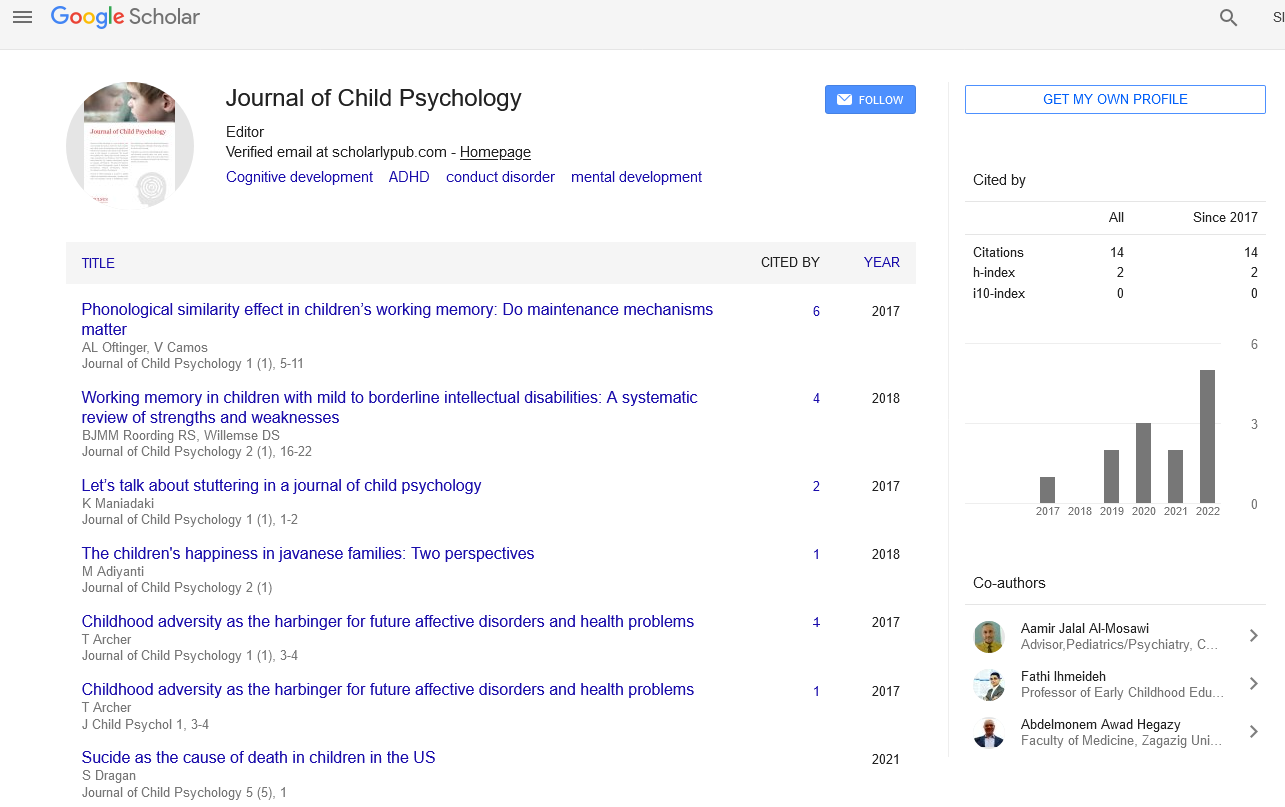Study of Cognitive Development in Various stages of fetus..
Received: 05-Nov-2021 Accepted Date: Nov 12, 2021; Published: 26-Nov-2021
This open-access article is distributed under the terms of the Creative Commons Attribution Non-Commercial License (CC BY-NC) (http://creativecommons.org/licenses/by-nc/4.0/), which permits reuse, distribution and reproduction of the article, provided that the original work is properly cited and the reuse is restricted to noncommercial purposes. For commercial reuse, contact reprints@pulsus.com
Introduction
Mental development is a branch of neuroscience and brain research that focuses on a child’s progress in terms of data management, calculating assets, perceptual capacity, language learning, and other aspects of the developed adult mind and mental brain science. There are subjective differences between how a child processes their waking experience and how an adult processes their waking experience (Such as article changelessness, the comprehension of consistent relations, and cause-impact thinking in young kids). Mental development is defined as the ability to consciously cognize, comprehend, and articulate one’s understanding in adult terms. Mental development is the process by which a person perceives, thinks about, and comprehends their surroundings as a result of the interaction of inherited and learning elements. Mental data enhancement is divided into four stages.
Elective models have recently been advanced, including data handling hypothesis, neo-Piagetian mental turn of events, which mean incorporating Piaget’s thinking with later models and ideas in formative and mental science, hypothetical mental neuroscience, and social-constructivist approaches. Bronfen brenner’s Ecological Systems Theory is another example of a mental advancement model. “Nature versus sustain,” i.e., the hypothesis that mental development is not predetermined by a person’s intrinsic traits, has been a hot topic in mental improvement (“nature”), or by their own association (“support”). However, it is currently recognized by many experts that this is a misleading diversity: there is strong evidence from biological and social sciences that from the earliest developed areas, the movement of quality meets events and meets climate.
Every young person is brought into the world with acquired minds who use them to gain knowledge and understanding about his or her current circumstances. The conditions for these conditions include inserting the handle and suction.
1–4 months: Babies repeat behaviors that occur unexpectedly because of their intelligence. For example, a baby’s finger joins the mouth and the baby starts sucking. If the feeling is pleasing to the child, then the child will try to recreate the behavior. Newborn babies use their first instinct (grasping and sucking) to explore their environment and develop strategies. Schemes are groups of the same actions or thoughts that are used repeatedly to turn the environment around. When a child begins to build schemes he uses the living space and simulation to become more familiar with the world. Matching is when a child responds to a new event in a way that is consistent with the existing schema. For example, a baby may incorporate a new teddy bear into its mouth and use its brain to force a bear into its mouth. A residence is where a child changes an existing schema or creates a completely new schema to deal with a new object or event. For example, a baby may need to hold its mouth wide open to cover a bear’s paw.
5-8 months: The child participates in the external development which he or she sees as fun, so he or she tries to produce that experience. For example, a child hits a tangible object on the bed unintentionally and likes to watch it turn. When he stops, the child begins to reach for something to turn around. At this stage, the propensity is made from the usual patterns the child has made so far, from a young child’s point of view, any differences between methods and conclusions. Children are equally unable to get into different activities quickly, and are simply focused on the main task. The kid may be inclined to make a tangible response to his or her hole, but in the meantime he or she is still trying to find a way to get to the changing place to change the way he or she sees fit. If there is another disturbance (says the parent is walking around the room) the child will not re-enter the object. Toys should be given to children who respond to a child’s actions to help develop their sense of humor. For example, a toy plays music when you press one button, and then an image appears when you press another button.





